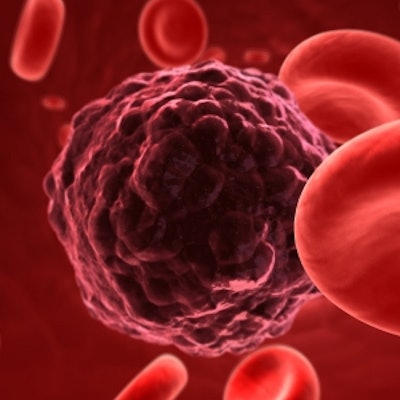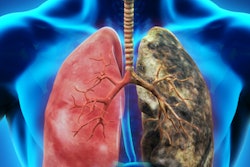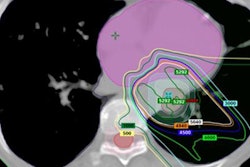
FDG-PET/CT won't help much in predicting progression-free or overall survival among patients with peripheral T-cell lymphoma, according to an Israeli study published in the October issue of Clinical Lymphoma, Myeloma and Leukemia.
The researchers found that FDG-PET/CT scans -- whether performed during or after chemotherapy -- were not significantly associated with patient survival. On the other hand, a negative FDG-PET/CT result could rule out the presence of bone marrow involvement in 90% of peripheral T-cell lymphoma cases (Clin Lymphoma Myeloma Leuk, October 2018, Vol. 18:10, pp. 687-691).
"Our study has shown that 90% of peripheral T-cell lymphoma cases will be FDG-avid," wrote lead author Dr. Ronit Gurion and colleagues from Rabin Medical Center in Petah-Tikva and Tel Aviv University. "However, PET/CT was not predictive for progression-free survival or overall survival at any point. The only predictive factor was the presence of lymphopenia."
FDG-PET/CT's proficiency
FDG-PET/CT is the prime method for staging many cancers and for evaluating the efficacy of treatment. However, with peripheral T-cell lymphoma, the extent of FDG avidity at baseline is not always accurate. There is also some question as to whether bone marrow biopsies add any value when assessing peripheral T-cell lymphoma cases.
Therefore, Gurion and colleagues set out to evaluate the extent to which FDG avidity could predict treatment response in patients with peripheral T-cell lymphoma. Patients received a baseline PET/CT scan before treatment, an interim scan during treatment, and a final scan at the end of treatment. The scans at each time point were evaluated to see how well they predicted overall survival and progression-free survival. The researchers also looked at possible correlations between PET/CT and bone marrow biopsy for identifying bone marrow involvement.
The retrospective study included 38 patients with newly diagnosed peripheral T-cell lymphoma and two patients with relapsed disease (median age, 54 years; range: 22-75 years). All of the subjects had undergone chemotherapy at Rabin Medical Center between 2008 and 2015. They received FDG-PET/CT scans (Discovery STE, GE Healthcare) with an FDG dose of 370 MBq to 666 MBq, based on weight.
A visual assessment of the FDG-PET/CT images and maximum standardized uptake values (SUVmax) were among the methods used to correlate the scans with patient outcomes. The researchers also collected data on each patient's peripheral T-cell lymphoma subtype, disease status, lactate dehydrogenase and albumin levels, and blood counts.
Treatment response
During the median follow-up time of 31 months, 21 patients (52%) progressed or relapsed and 25 (62%) died. Lymphoma was the cause of death for 17 patients (68%).
Among the 40 subjects who underwent baseline PET/CT, 36 had positive findings and four had negative results. For the interim PET/CT scans, among 23 patients, 10 had positive findings and 13 had negative results. Finally, of the 34 patients who had end-of-treatment scans, eight had positive findings and 26 had negative results.
The median overall survival for all patients was 39 months (range: 27-51 months), while median progression-free survival was 16 months (range: 7-24 months). However, neither interim nor end-of-treatment PET/CT results were significantly associated with either outcome.
"Although 12.5% of our patients with positive end-of-treatment PET/CT findings survived compared with 58% of the patients with negative PET/CT findings, the association was not statistically significant," the authors wrote. "However, this might have resulted from the small sample size in our study."
Influential indicators
The only factors significantly associated with overall survival and progression-free survival came from lab results: high lactate dehydrogenase and low lymphocyte, hemoglobin, and albumin levels. On multivariate analysis, the association only remained for lymphopenia.
In regard to bone marrow involvement, FDG-PET/CT was comparable to bone marrow biopsy. Among the 35 patients who underwent both tests, FDG-PET/CT detected bone marrow involvement in seven patients (20%) and bone marrow biopsy did so in five (14%). The two methods agreed on findings for 27 patients (77%): 25 negative results and two positive findings. Pretreatment FDG-PET/CT had a sensitivity of 40%, specificity of 83%, and a negative predictive value of 89% for bone marrow involvement.
"Thus, a patient with negative bone marrow involvement findings according to the PET/CT results had a 90% chance of having negative results by bone marrow biopsy," the authors wrote.
The researchers also cited several limitations to the study, including its retrospective approach and relatively few end-of-treatment PET/CT scans and enrolled patients.
"Our data do not support the prognostic value of interim PET/CT or end-of-treatment PET/CT regarding progression-free survival or overall survival," Gurion and colleagues concluded. "The only predictive factor was the presence of lymphopenia."



















